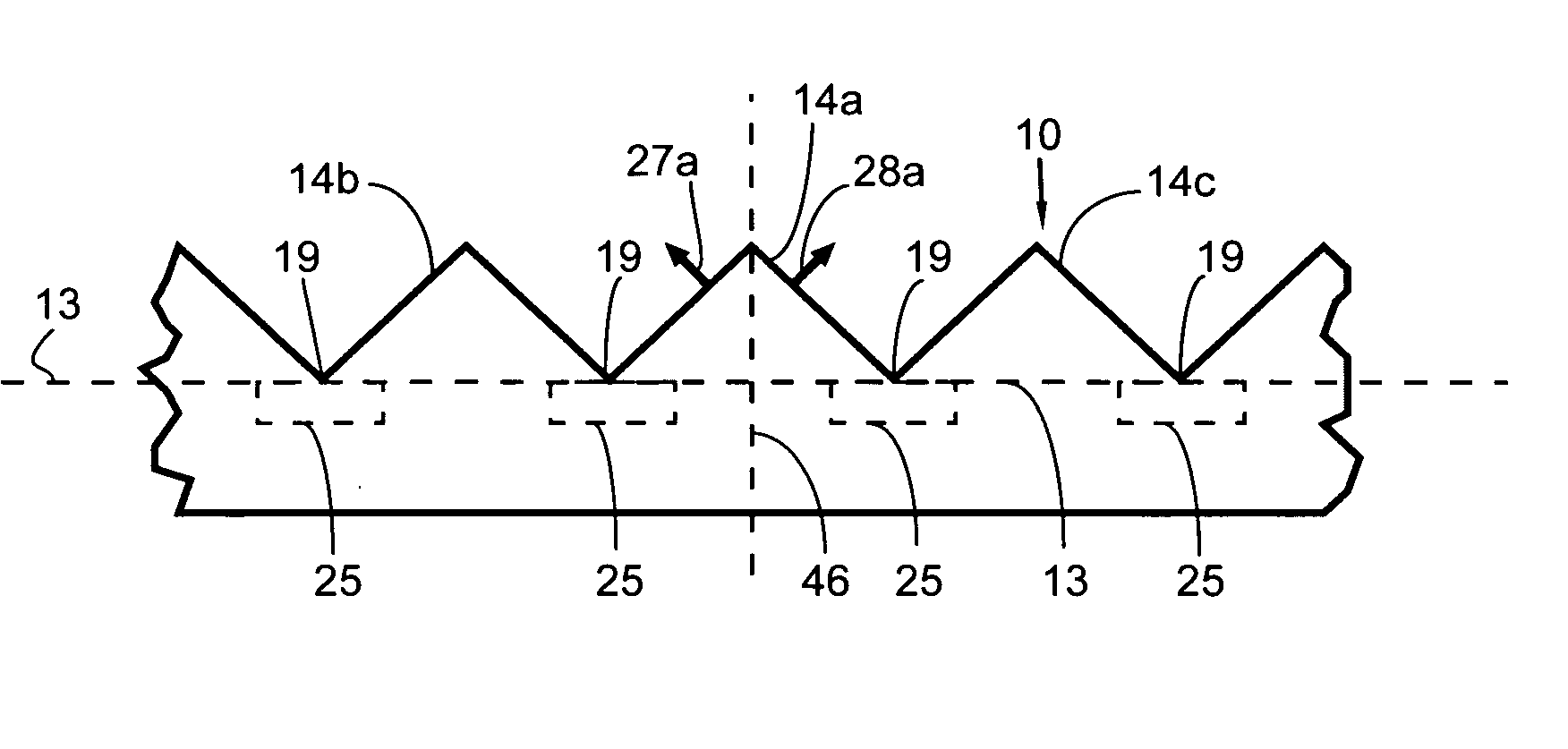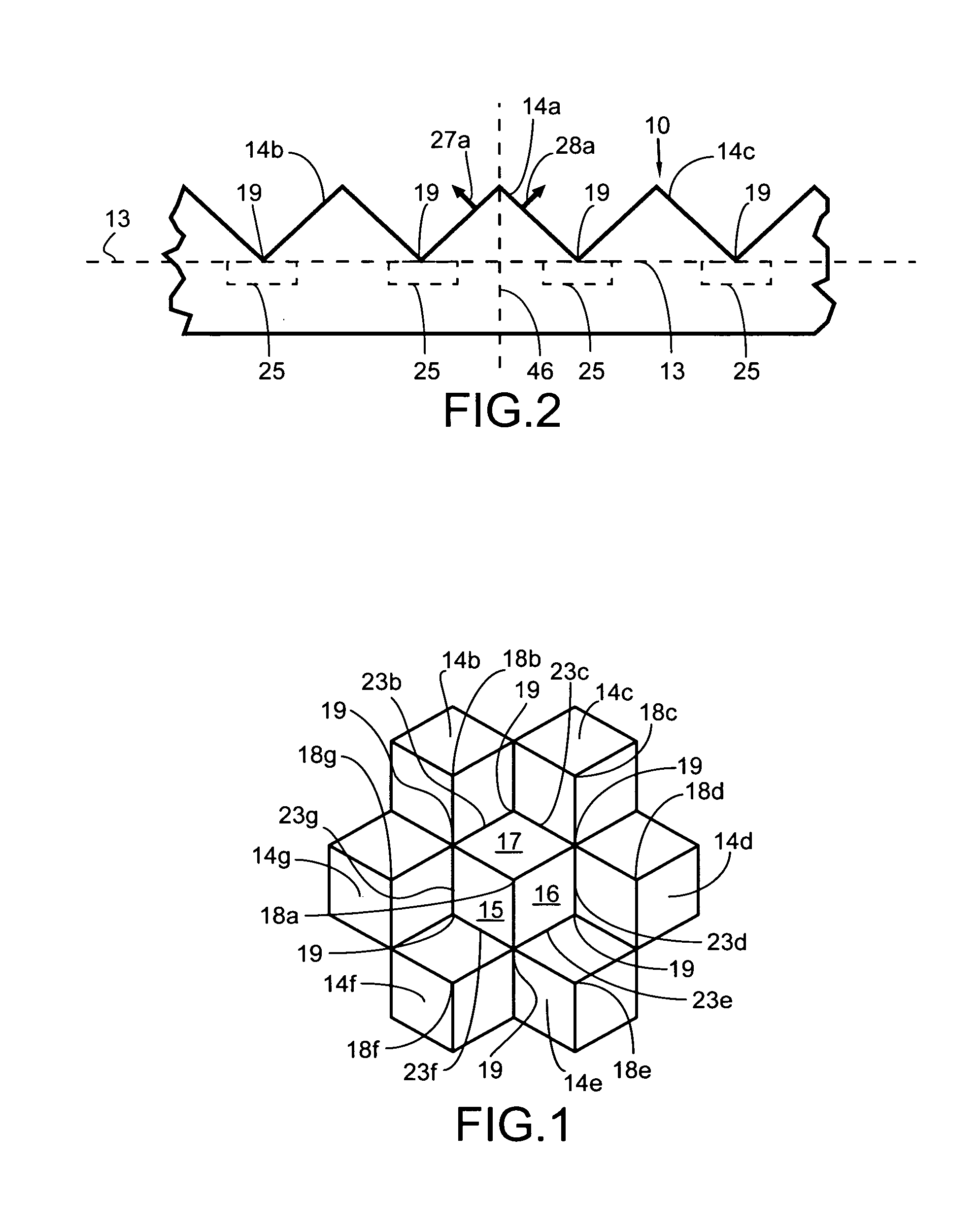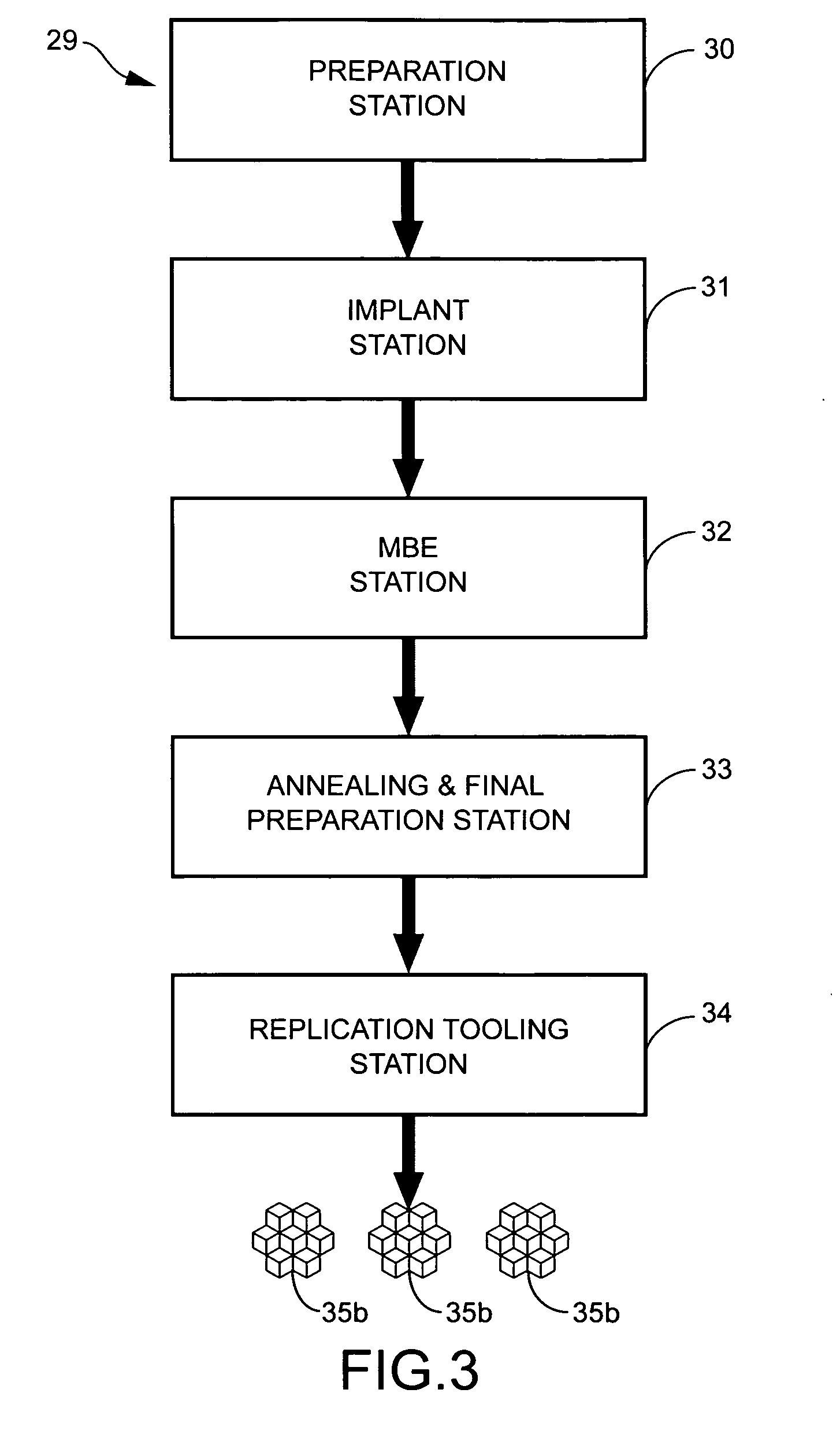Method for constructing a phase conjugate mirror
a phase conjugate mirror and mirror technology, applied in the direction of crystal growth process, instruments, transportation and packaging, etc., can solve the problems of difficult frequency-scanning, and difficult to achieve monolithic integration. achieve the effect of neutralizing anomalous internal reflections
- Summary
- Abstract
- Description
- Claims
- Application Information
AI Technical Summary
Benefits of technology
Problems solved by technology
Method used
Image
Examples
Embodiment Construction
—FIGS. 1, 2, 3, 4, AND 5—PREFERRED EMBODIMENT
[0051]For the purposes of promoting an understanding of the principles of the invention, reference will now be made to the embodiment illustrated in the drawings and specific language will be used to describe the same. It will nevertheless be understood that no limitation of the scope of the invention is thereby intended. Any alterations and further modifications in the described device, and any further applications of the principles of the invention as described herein are contemplated as would normally occur to one skilled in the art to which the invention relates. FIG. 1 depicts a crystalline corner-cube array device 10 of the present invention. Device 10 has a substrate 11 supporting a corner-cube array 10.
[0052]Further, FIG. 1 provides a cutaway view of substrate 11 corresponding to the removal of a part of corner-cube array 10. Substrate 11 is formed from a semiconductor material (e.g., GaAs, InP), having a common cubic crystalline ...
PUM
| Property | Measurement | Unit |
|---|---|---|
| Length | aaaaa | aaaaa |
| Pressure | aaaaa | aaaaa |
| Angle | aaaaa | aaaaa |
Abstract
Description
Claims
Application Information
 Login to View More
Login to View More - R&D
- Intellectual Property
- Life Sciences
- Materials
- Tech Scout
- Unparalleled Data Quality
- Higher Quality Content
- 60% Fewer Hallucinations
Browse by: Latest US Patents, China's latest patents, Technical Efficacy Thesaurus, Application Domain, Technology Topic, Popular Technical Reports.
© 2025 PatSnap. All rights reserved.Legal|Privacy policy|Modern Slavery Act Transparency Statement|Sitemap|About US| Contact US: help@patsnap.com



